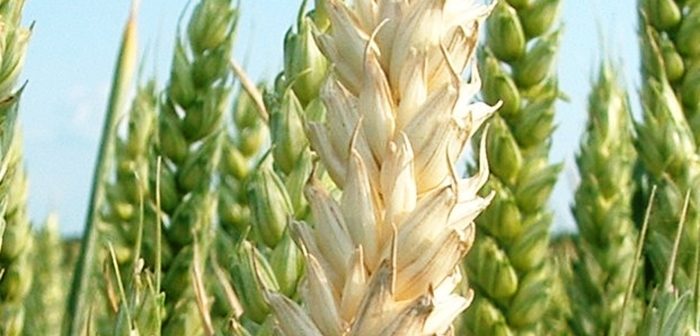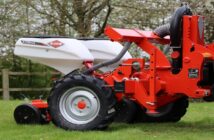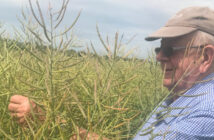As wheat ears emerge in crops across northern Britain, Hutchinsons emphasises the importance of accurately timing T3 sprays to protect yield potential of milling and feed crops in the run-up to harvest.
The season has been a roller-coaster for many, resulting in a wide range of growth stages that could make for trickier timing of the final fungicide most crops receive, Northumberland-based Hutchinsons agronomist Tom Whitfield says.
The T3 ear wash spray serves three important roles which should be considered in any plans. These include controlling ear diseases such as fusarium, topping-up foliar disease control and extending green leaf retention (see below).
Product choice should be tailored to these factors, but most important is spray timing, especially given the wide range of drilling dates and crop growth stages this season, Mr Whitfield says.
“Many cereals have raced through growth stages in recent weeks as they make up for a slow start earlier this spring. The most forward crops were at full ear emergence in the first week of June, while more backward, later-sown crops were at early booting or had just received their main flag leaf (T2) spray.
“Timing T3 sprays accurately will be key. Sometimes they are applied too late, when flowering is well underway, which reduces efficacy.
“Fungicides should be applied as soon as ears complete emergence and flowering is about to start.”
Flowering tends to start in the middle of the ear and spread outwards, but varies for different varieties.
Mr Whitfield expects most T3 applications will be spread over the next fortnight or so, but stresses that decisions must be made on a variety and field-by-field basis.
Controlling ear diseases
Where settled weather has allowed timely and effective T2 applications, the T3 can focus specifically on controlling ear diseases rather than topping-up flag leaf sprays, says Hutchinsons technical development director, Dr David Ellerton.
Fusarium and associated mycotoxins remain the priority, although disease development depends on weather during flowering, so asses the risks and tailor sprays accordingly, he advises.
Fusarium species are favoured by warm, wet weather during flowering, so where this is likely, he recommends products based on prothioconazole, tebuconazole or metconazole.
In contrast, cool, wet conditions promote Microdochium nivale, which although does not produce mycotoxins, can have a significant yield impact in bad years such as 2012, Dr Ellerton says. Prothioconazole is more effective than tebuconazole against Microdochium, he notes.
Other ear diseases such as sooty moulds, mildew, yellow rust and Septoria nodorum should be considered, although these are generally controlled by fusarium chemistry.
Products based on phosphites applied at ear emergence have also been found to reduce DON production.
Top-up foliar disease control
Although T2 fungicides (mostly based on SDHIs) have, or should, perform well given dry, settled weather around flag leaf emergence, T3s may still need to bolster foliar disease control, especially Septoria tritici, says Dr Ellerton.
The need will be greatest in susceptible varieties, where earlier sprays have been compromised, and/or where unsettled weather increases disease pressure in coming weeks, he notes.
“Where Septoria tritici has not been fully controlled at T2 ear sprays should concentrate on products containing epoxiconazole or prothioconazole.”
Despite dry conditions during much of May, Mr Whitfield says Septoria is still present on lower leaves near the base of some crops, so disease pressure may increase with wet weather.
Extend greening
Finally, both agree there is value from including a strobilurin at T3 to help extend green leaf retention, especially as crops typically produce 60% of total biomass between flag leaf emergence and maturity.
During grain filling there is a large redistribution of nitrogen within the crop as proteins are degraded and nitrogen is transferred from the canopy to form grain protein, a process which progressively slows photosynthesis.
Mr Whitfield says anything that keeps crops alive and green canopies working for longer, could make all the difference to yield by harvest. He also recommends including magnesium with ear wash sprays where required.
T3 advice
- Apply at full ear emergence just before flowering starts
- Ear disease priorities include: fusarium (warm & wet), microdochium (cool & wet), sooty moulds, yellow & brown rust, Septoria nodorum
- Top-up foliar disease control (especially Septoria tritici)
- Tailor treatments to disease risk, variety and earlier chemistry – maximum of two SDHIs or strobilurins per season
- Consider strobilurins to boost green leaf area retention
Begin AHDB mycotoxin risk assessment before applying T3 –




